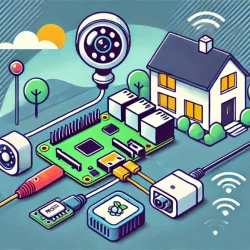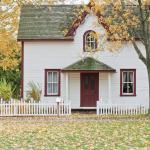Home Fire Safety
The most important thing to remember in a fire situation is the speed of fire spread in a structure. When talking to people who have just experienced a fire incident the most common comment is how fast the fire intensified. Most of our personal experience with fire is the back yard grill or campfire. These always seem to take a long time to ignite and grow. The same cannot be said for a structure fire. Once it starts it preheats all of the material in the structure so it can engulf an entire room in only a second. Once you understand that concept you can see why it is always stated, “Never go back into a burning structure”. Once you become aware of a fire leave the structure immediately (do not try to gather belongings). Once outside – Stay outside. Call the fire department from your cell phone outside or from a neighbor’s house. DO NOT under any circumstances go back into the structure.
Another consideration is the environment inside a burning structure. Fire flames are not the major cause of deaths in a fire incident. It’s the smoke and toxic fumes given off by the material involved. While your favorite chair may not be in actual flames it could be hot enough to be giving off toxic fumes. The visible smoke is deadly but the invisible toxic fumes are worst. It’s hard to explain this to someone in the front yard who can see inside their living room and wants to go back for a picture or two. What you cannot see is the heat and toxic fumes, both of which can disable and then kill you.
Smoke detectors
Smoke detectors can be lifesavers. They can respond to particles of combustion before there is visible smoke. This gives you the early warning necessary to evacuate the house. Unfortunately they can sometimes respond to dust or “friendly” smoke from the evening meal in the kitchen. While this happens more often then not, don’t get lulled into the attitude that it’s another false alarm. In the case of the over cooked meal it’s not a false alarm at all. Treat every alarm as the real thing until it can be proven otherwise. This means getting everyone out of the house. While it may be an inconvenience the alternative is deadly. Remember that once you can see the fire it will grow quickly and you may not be able to escape.
Most detectors installed today are powered from the home 120vac power. In addition they have batteries to power the detector in case of power failure. They are also interconnected so that if one detector senses a fire condition all of the detector will sound an alarm. In older home the detectors are just battery powered and are stand-alone units. In either case it is imperative that the batteries be kept up to date. The method recommended by the National Fire Protection Association is to change the batteries when you change your clocks for daylight savings time. Use the old battery in some non critical device.
Fireplace
Now that the weather has turned cold we’re using the fireplace to help us stay warm. We all appreciate a good fire but there are a few precautions we need to take. Always be sure the fireplace flue is clean. This is a necessary task ever year that is best left to a professional. Burning woods (seasoned hardwood are best, Soft or moist woods are worst) leave a residue on the inside of the flue that can be dangerous. Here is a check list for your use:
Jim Williams was a member of several volunterr fire departments over a 30 year peroid serving as chief of department for 11 years. I was a member of the National Fire Protection Association, International Association of Fire Chiefs, and Texas State Fireman's and Fire Marshal's Association.
More to Read:
Previous Posts:




